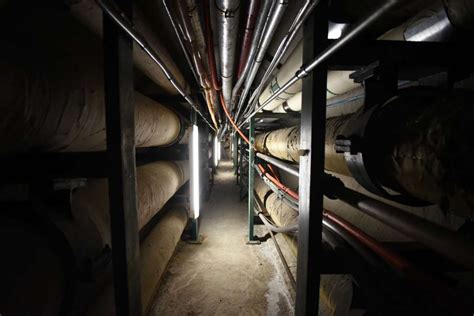The danger area of a helicopter can be a cause of concern for both the pilot and the passengers. The danger area is the area where the helicopter is most likely to crash and cause injury or even death. The larger the danger area, the greater the risk of a fatal accident.
The danger area of a helicopter is determined by the aircraft’s weight, speed, and altitude. For example, at an altitude of 10,000 feet, the danger area could be 30 miles around the helicopter, while at a lower altitude, such as 5,000 feet, the danger area could be as much as 15 miles around the helicopter. The higher the altitude the greater the danger area is.
The danger area also depends on the speed of the helicopter. Generally speaking, the faster the helicopter is flying the larger the danger area. For instance, a helicopter travelling at a speed of 80 knots (about 93 mph) will have a danger area of about 45 miles, while one travelling at a speed of 50 knots (about 57 mph) will have a danger area of about 25 miles.
In addition to the size of the danger area, the type of terrain the helicopter is flying over also affects the danger area. For example, a helicopter flying over flat terrain will have a larger danger area than one flying over a mountainous area. The same is true of a helicopter flying over water compared to one flying over land.
The danger area of a helicopter should be taken into consideration when planning a flight. A pilot should always be aware of the potential risks associated with a flight and plan accordingly. The danger area should also be taken into consideration when choosing a landing spot, as the larger the danger area, the higher the risk of a fatal accident.
The Risks Of Flying A Helicopter In A Danger Area
Helicopters are a great form of transportation, with the ability to carry people and cargo to places that can’t be reached by traditional aircraft. But with the great advantages of helicopters come some inherent risks that pilots must consider when flying in a danger area. In this article, we’ll discuss the risks of flying a helicopter in a danger area and how to minimize them.
A danger area is defined as an area where aircraft should not fly because of the risk posed to the aircraft or its occupants. These areas can include areas with active military operations, areas with hazardous weather conditions, or areas with large-scale forest fires or other natural disasters.
The dangers associated with flying in a danger area can be divided into two categories: physical and operational. Physical dangers include the risk of coming into contact with obstacles such as trees or other objects, as well as the risk of flying too close to the ground or other structures. Operational dangers include the risk of being shot down by hostile forces, as well as the risk of mechanical or pilot error.
To minimize the risks associated with flying in a danger area, pilots should take the following precautions:
- Avoid flying over active military operations, dangerous weather conditions, and other areas of high risk
- Follow all applicable rules and regulations for the area
- Stay at least 500 feet above ground level
- Remain in contact with air traffic control at all times
- Keep an eye out for potential obstacles
- Make sure the helicopter is in good working condition
In addition, pilots should pay close attention to weather patterns and fly only when conditions are suitable. It’s also important to make sure the helicopter is properly maintained and that the pilot is properly trained and qualified to fly in the area.
Although the risks of flying a helicopter in a danger area can be minimized with proper planning and precautions, it’s important to remember that accidents can still happen. Therefore, it’s important to be aware of the potential risks and take all necessary steps to reduce them.
What To Consider When Entering A Danger Area In A Helicopter
When it comes to helicopters, one of the greatest safety risks is entering a danger area. Whether a pilot is flying a military mission or simply sightseeing, it is important to take into account the risks associated with entering a danger zone. By understanding the dangers associated with flying a helicopter into a danger zone, pilots can take the necessary precautions to ensure their safety.
One of the first steps a pilot should take when entering a danger area is planning. Before entering the area, the pilot should have an understanding of the terrain, weather conditions, air traffic, and any other potential risks. Additionally, the pilot should have a plan in place in case of an emergency situation. Knowing the terrain and other conditions can help the pilot make informed decisions about their course of action.
In addition to planning, it is important for pilots to be aware of the aircraft’s capabilities. Pilots should be aware of their aircraft’s range, speed, and turning ability. This information is important for avoiding potentially hazardous areas. Additionally, pilots should make sure their aircraft is equipped with the necessary equipment for flying in a danger area, such as GPS, night vision, and other navigation aids.
Another important factor to consider when entering a danger area is communication. Pilots should always ensure that they are in contact with air traffic control (ATC) and other personnel. This is important for staying safe and avoiding collisions with other aircraft. Additionally, pilots should be aware of any special regulations or warnings issued by ATC for the area.
Finally, it is important for pilots to be aware of the potential risks associated with flying in a danger area. Pilots should be aware of the potential for hazards such as collisions, weather, terrain, and other aircraft. Additionally, pilots should be aware of the potential for enemy action in the area. By being aware of these risks, pilots can take the necessary precautions to ensure their safety.
Entering a danger area in a helicopter can be a dangerous endeavor, but with the right preparation and knowledge, pilots can take the necessary steps to ensure their safety. By understanding the risks associated with flying in a danger area, pilots can plan accordingly, remain aware of their aircraft’s capabilities, communicate with ATC and other personnel, and be aware of the potential risks associated with flying in a danger area.
 Road Topic Tourism & Travel
Road Topic Tourism & Travel




